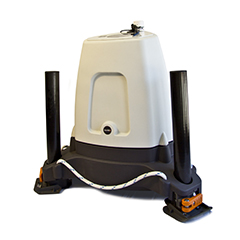Scientists travel to the remote Southern Ocean to study cloud formation
BOULDER, Colorado, U.S. — This month, an international team of scientists will head to the remote Southern Ocean with a ZephIR 300 wind lidar providing the project’s remote wind measurements on-board the R/V Investigator, an Australian deep-ocean research vessel. The U.S. portion of the project is funded by the National Science Foundation (NSF).
The team’s discoveries will be used to improve climate models, which routinely underestimate the amount of solar radiation reflected back into space by clouds in the region. Accurately simulating the amount of radiation that is absorbed or reflected on Earth is key to calculating how much the globe is warming.
The field campaign, called the Southern Ocean Clouds, Radiation, Aerosol Transport Experimental Study, or SOCRATES, could also help scientists understand the very nature of how clouds interact with aerosols — particles suspended in the atmosphere that can be from either natural or human-made sources. Aerosols can spur cloud formation, change cloud structure, and affect precipitation, all of which affect the amount of solar radiation that is reflected.
During the mission, which will run from mid-January through February, the scientists will utilise data from a collection of advanced instruments packed on-board a research aircraft that is owned by the NSF and operated by the National Center for Atmospheric Research (NCAR) and a research vessel that is operated by the Australia’s Commonwealth Scientific and Industrial Research Organisation (CSIRO). The vessel-installed ZephIR 300 wind lidar will provide advanced wind measurements from 10 to 200 metres above the deck of the research vessel.
“SOCRATES will allow for some of the best observations of clouds, aerosols, radiation, and precipitation that have ever been collected over the Southern Ocean”; said Greg McFarquhar, a principal investigator and the director of the University of Oklahoma Cooperative Institute for Mesoscale Meteorological Studies (CIMMS). “These data will provide us with critical insight into the physics of cloud formation in the region, information we can use to improve global climate models.




























